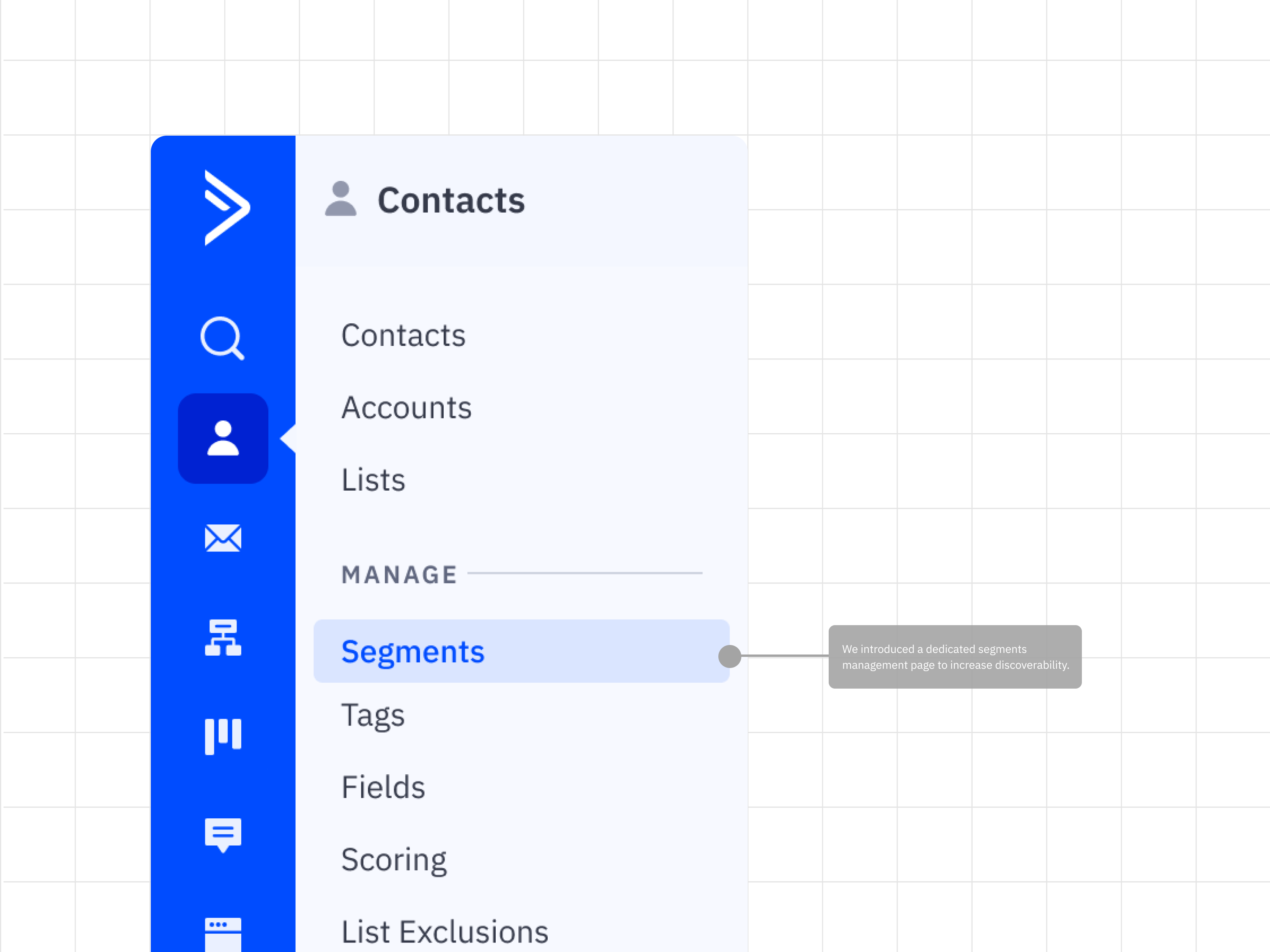ActiveCampaign's segments were cumbersome, hard to find, and hard to reference throughout the product. The team and I sought out to solve how might we make our segment experience more integrated so users can target the right contacts, at the right time?
Platform Audit, User Flows, UI Design, UX Design, Interaction Design, Prototypes, User Research, User Testing, Design Leadership
Improved segment usability and management by 35%, resulting in the highest adopted product launch of the year.

The problem was segments failed to scale alongside the companies hyper-growth. As we started to introduce more features, core segment usability issues arose, which lead to a decrease in usability and overall user satisfaction.
This was a huge pain point for our user. Marketers often want to personalize their marketing campaigns using a segmented list of contacts. There was no clear way to identify which segment the list was tied to or its conditions without going through multiple steps.
it was clear we needed to talk to our customers to see how they structured their list, segments, and how they expected to use segments in our platform.
We talked to 15 users to get a better understanding of their workflows. We wanted to understand their pain points and expecations.
Before diving into design, I wanted to get a better understanding of what paths we could explore to solve these issues. I led a Opportunity & Solutions Tree (OST) exercise with my team to document all of our ideas. Our goal was to brainstorm how might we solve the problem, then break it down into opportunities, solutions, and experiments. From there we completed an exercise to determine effort and ROI to narrow down what to focus on first.

Next, I created a service blueprint to visualize the users journey.
.png)
The new segment experienced offered a dedicated management page, accurate contact count, visible conditions, and reusability.
This new experience also introduced our "Segment Library". This allowed for segment condition reusability in key product areas of the platform, like campaigns, automation, and lead scoring. All of these areas rely on accurate segments to determine a contacts journey.



This project resulted in the highest adopted feature in 2024, with over 80% of our customers fully activated.
Instead of me claiming it's success, lets see what users had to say:

.png)
.png)